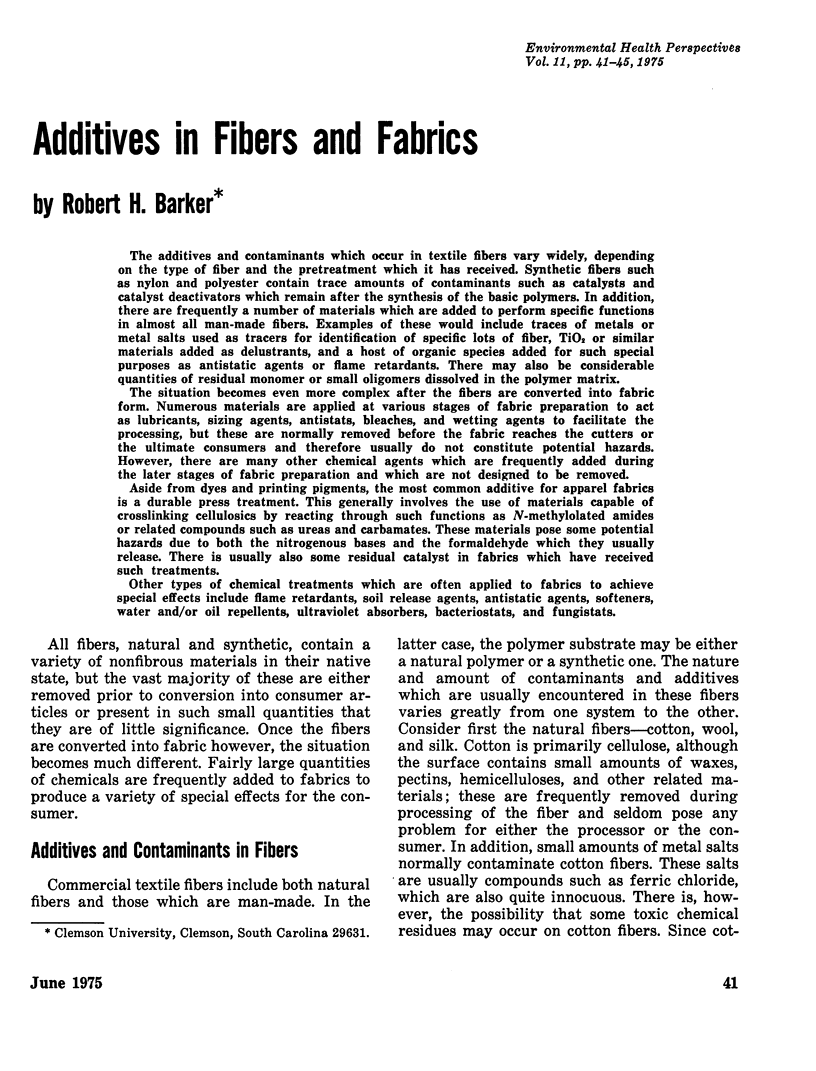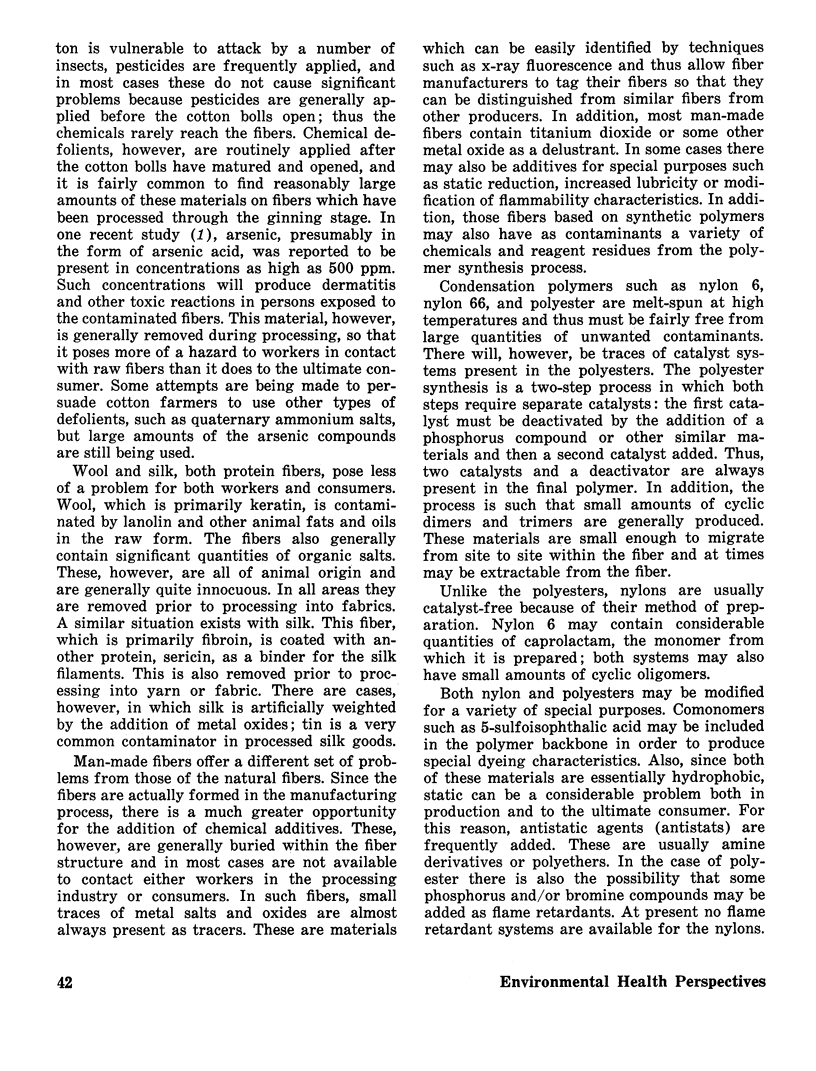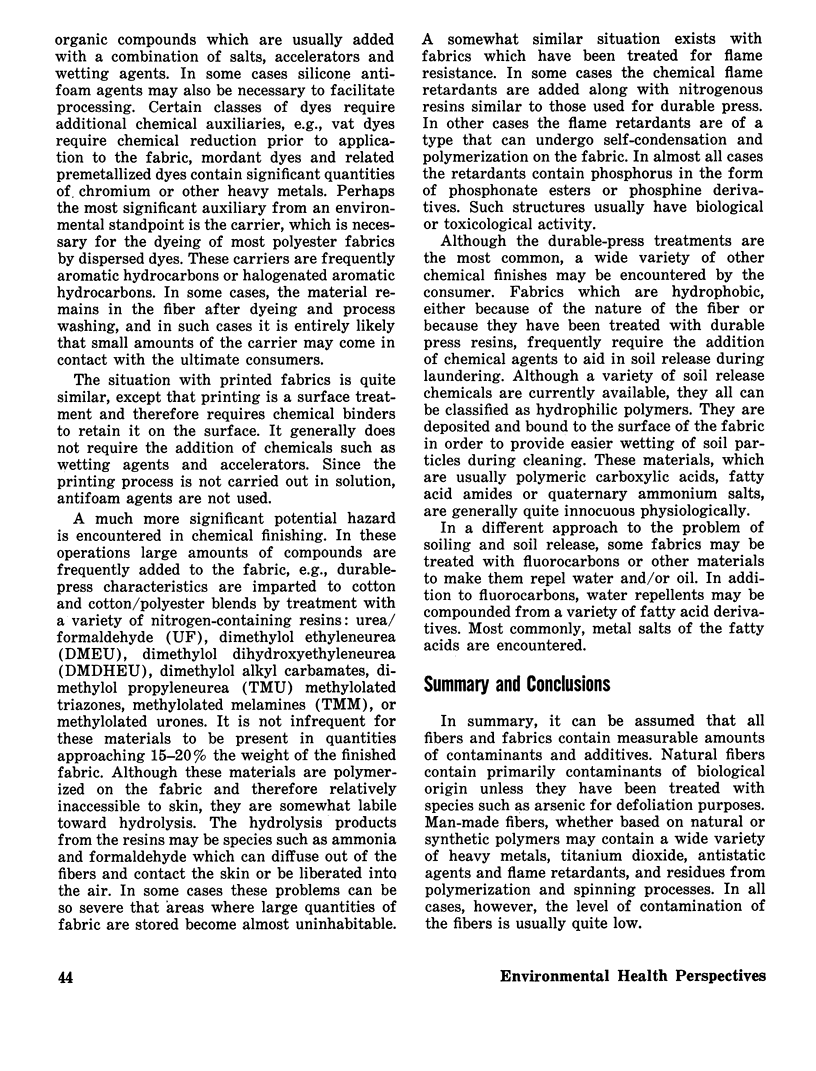Abstract
The additives and contaminants which occur in textile fibers vary widely, depending on the type of fiber and the pretreatment which it has received. Synthetic fibers such as nylon and polyester contain trace amounts of contaminants such as catalysts and catalyst deactivators which remain after the synthesis of the basic polymers. In addition, there are frequently a number of materials which are added to perform specific functions in almost all man-made fibers. Examples of these would include traces of metals or metal salts used as tracers for identification of specific lots of fiber, TiO2 or similar materials added as delustrants, and a host of organic species added for such special purposes as antistatic agents or flame retardants. There may also be considerable quantities of residual monomer or small oligomers dissolved in the polymer matrix. The situation becomes even more complex after the fibers are converted into fabric form. Numerous materials are applied at various stages of fabric preparation to act as lubricants, sizing agents, antistats, bleaches, and wetting agents to facilitate the processing, but these are normally removed before the fabric reaches the cutters of the ultimate consumers and therefore usually do not constitute potential hazards. However, there are many other chemical agents which are frequently added during the later stages of fabric preparation and which are not designed to be removed. Aside from dyes and printing pigments, the most common additive for apparel fabrics is a durable press treatment. This generally involves the use of materials capable of crosslinking cellulosics by reacting through such functions as N-methylolated amides or related compounds such as ureas and carbamates. These materials pose some potential hazards due to both the nitrogenous bases and the formaldehyde which they usually release. There is usually also some residual catalyst in fabrics which have received such treatments. Other types of chemical treatments which are often applied to fabrics to achieve special effects include flame retardants, soil release agents, antistatic agents, softeners, water and/or oil repellents, ultraviolet absorbers, bacteriostats, and fungistats.
Full text
PDF






